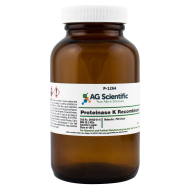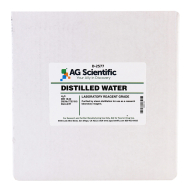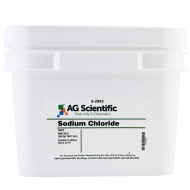The following is a guide for DNA Isolation from Tails using the Proteinase K method.
DNA Isolation from Tails
- Each tail should be in a clean eppendorf tube.
- Add 500 µl of tail lysis buffer containing Proteinase K to each tube.
- Incubate tail samples in 50-60°C water bath overnight.
- Add 250 µl saturated (6M) NaCl to each tube.
- Shake tubes vigorously (~20 times) and incubate tubes on ice for 10 minutes.
- Spin tubes on low speed (#6 on Hemle centrifuge) at 4°C for 10 minutes.
- Remove supernatant and place into a clean eppendorf.
- Add 650 µl isopropanol and invert to mix. Incubate tubes at room temperature for 15 minutes.
- Recover DNA by centrifuging, max speed, 10 minutes at room temp.
- Place tubes inverted on bench and allow to air dry 5 minutes.
- Add 200 µl of TE pH 7.5 or sterile water to each tube. Incubate in 50-60°C water bath for 10 minutes. Re-suspend pellet by pipetting up and down several times.
Tail Lysis Buffer
Proteinase K concentration: Add 20 µl of a 20 mg/ml stock per 1ml of tail lysis buffer.
Embryonic stem cell (ES Cells): For ES Cells the protocol is very much the same except for the following: All steps are done in a well of a 24 or 6-well dish. The initial incubation in the lysis buffer is done at 37°C for 2 hours to overnight.
Southerns
For important Southerns:
- Dilute DNA in 400µl of water.
- Phenol/chloroform extract DNA.
- Precipitate in 1/10 vol 3M sodium acetate and equal volume of isopropanol.
- Precipitate 15 minutes at RT.
- Wash pellet with 70% EtOH.
- Resuspend in water.
We would like to acknowledge & thank the following group: The Jacks Lab. Prof. Jacks is a Howard Hughes Medical Institute Investigator. Our studies are also supported by the National Institutes of Health, the Ludwig Fund for Cancer Research and the Lustgarten Foundation. Prof. Jacks is a Daniel K. Ludwig Scholar and the David H. Koch Professor of Biology at MIT.
Proteinase K Antigen Retrieval Protocol
Description: Formalin or other aldehyde fixation forms protein cross-links that mask the antigenic sites in tissue specimens, thereby giving weak or false negative staining for immunohistochemically detection of certain proteins. The Proteinase K based solution is designed to break the protein cross-links, therefore unmask the antigens and epitopes in formalin-fixed and paraffin embedded tissue sections, thus enhancing staining intensity of antibodies.
Solutions and Reagents:
- Proteinase K Solution (20 µg/ml in TE Buffer, pH 8.0) TE Buffer (50mM Tris Base, 1mM EDTA, 0.5% Triton X-100, pH 8.0):Tris Base - 6.10 gEDTA - 0.37 g Triton X-100 - 5 ml Distilled water - 1000 ml Mix to dissolve. Adjust pH 8.0 using concentrated HCl (10N HCl). Store at room temperature.
- Proteinase K Stock Solution (20x, 400 µg/ml or 12 units/ml) Proteinase K (30 units/mg)- 0.008 g (8 mg)TE Buffer, pH8.0 - 10 mlGlycerol - 10 ml Add Proteinase K to TE buffer until dissolved. Then add glycerol and mix well. Aliquot and store at 20°C for 2-3 years.
- Working Solution (1x, 20 µg/ml or 0.6 units/ml)Proteinase K Stock Solution (20x) - 1 mlTE Buffer, pH8.0 - 19 ml Mix well. This solution is stable for 6 months at 4°C.



